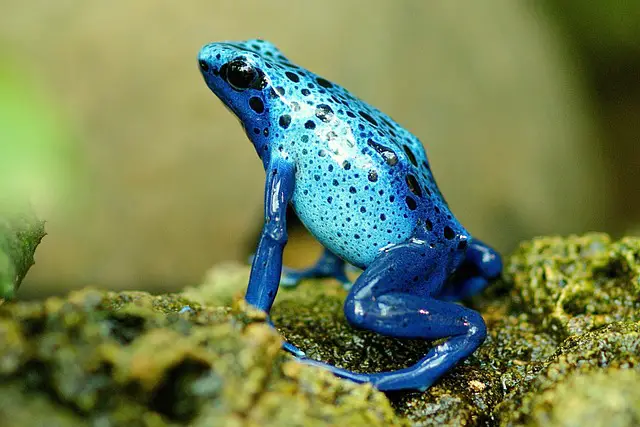Have you ever noticed that frogs seem to be around all night but nowhere to be seen during the day? This blog post is for you if you’ve ever wondered where these amphibians go during the day. We’ll examine some of the most common places frogs spend their sunny hours and why they choose those habitats.
Where do frogs go during the day?
Frogs are amazing creatures and have some unique behaviors that many people do not realize. For example, while they tend to be more active at night, frogs prefer more private spots away from sight during the day.
Often this includes places such as damp logs, under leaves or rocks, or in a stream of water where they can relax and stay calm.
Frogs have excellent camouflage abilities, which help them blend into these hiding places, making it almost impossible to spot them during the day unless we know exactly where to look.
During the day, frogs remain silent until dusk, when they move out of their hiding places to start their nightly activities.
Most Species of Frogs are Nocturnal
It’s true; most species of frogs are nocturnal, meaning they sleep during the day and come out at night to hunt for food and find mates.
Frogs hide in shady spots during daylight hours or burrow themselves into mud or vegetation.
This behavior has been observed in many species, including tree frogs, bullfrogs, and aquatic frogs.
Frogs Seek Out Cooler Temperatures
Frogs need cooler temperatures to survive than humans, so they look for areas with shade or water to cool off during the hot days.
Treefrogs are usually found among the leaves of trees where it’s cooler, while bullfrogs may remain submerged underwater for hours at a time during the hottest part of the day.
Aquatic frogs also seek cooler temperatures by burying themselves in mud or hiding among vegetation along riverbanks and other bodies of water.
Avoid Predators and Stay Safe From Harm
Another reason why frogs may stay hidden away during the day is that it helps them avoid predators.
When a frog sleeps in one place all night long, it becomes an easy target for birds and other animals looking for something to eat.
But if a frog stays hidden away during daylight hours, it can’t easily be spotted by predators looking for its next meal.
So by staying out of sight during these times, a frog can stay safe from harm until nighttime, when it can venture out again without fear of being caught by predators.
Where do frogs go after the rainy season?
After the rainy season, frogs tend to disperse widely in search of a new home.
Frogs’ preferences for habitat vary with the species, but generally, they seek areas near moist soils and water sources that provide them with food, such as insects and other invertebrates.
In addition, many species require specific temperatures, humidity levels, or vegetation types, limiting their possible habitats.
Depending on availability in the region, frogs may be most interested in wetlands, ponds, and marshes, but they can also inhabit dry grasslands, savannas, or even forests.
Ultimately, each frog will travel far and wide to find an optimal habitat to meet its needs.
Where do frogs go in the winter?
Frogs are in luck, as they have several options for surviving winter, depending on where they live.
Most frogs living in temperate regions — such as much of the United States and Europe — will find havens beneath leaves, mud, or rocks near their breeding ponds.
They use a process known as brumation, which reduces their activity and energy needs while avoiding freezing temperatures.
Some even venture into burrows or dig below the surface of frozen ponds to overwinter.
In areas with colder winters, like polar regions or high-elevation valleys, frog populations may hibernate in shallow burrows until spring arrives.
A few species of frogs in tropical regions that experience wet and dry seasons will enter a form of dormancy during the dry season without requiring cold temperatures; one species of Southeast Asian frog can survive up to four months without food.
Whatever method is used, these animals have evolved incredibly adaptive strategies to survive winter despite its harsh conditions.
Conclusion:
The next time you see a frog hopping around after dark, remember that he’s probably just trying to find his way home after spending his days in some creative hiding spots.
By seeking out cooler temperatures during hot days and avoiding potential predators on their nightly hunts for food and mates, these amphibians have become experts at keeping themselves safe from harm until nighttime rolls around again.
Whether tucked away amongst tree leaves or buried beneath mud and vegetation near riversides, frogs have adapted well to their environments.




